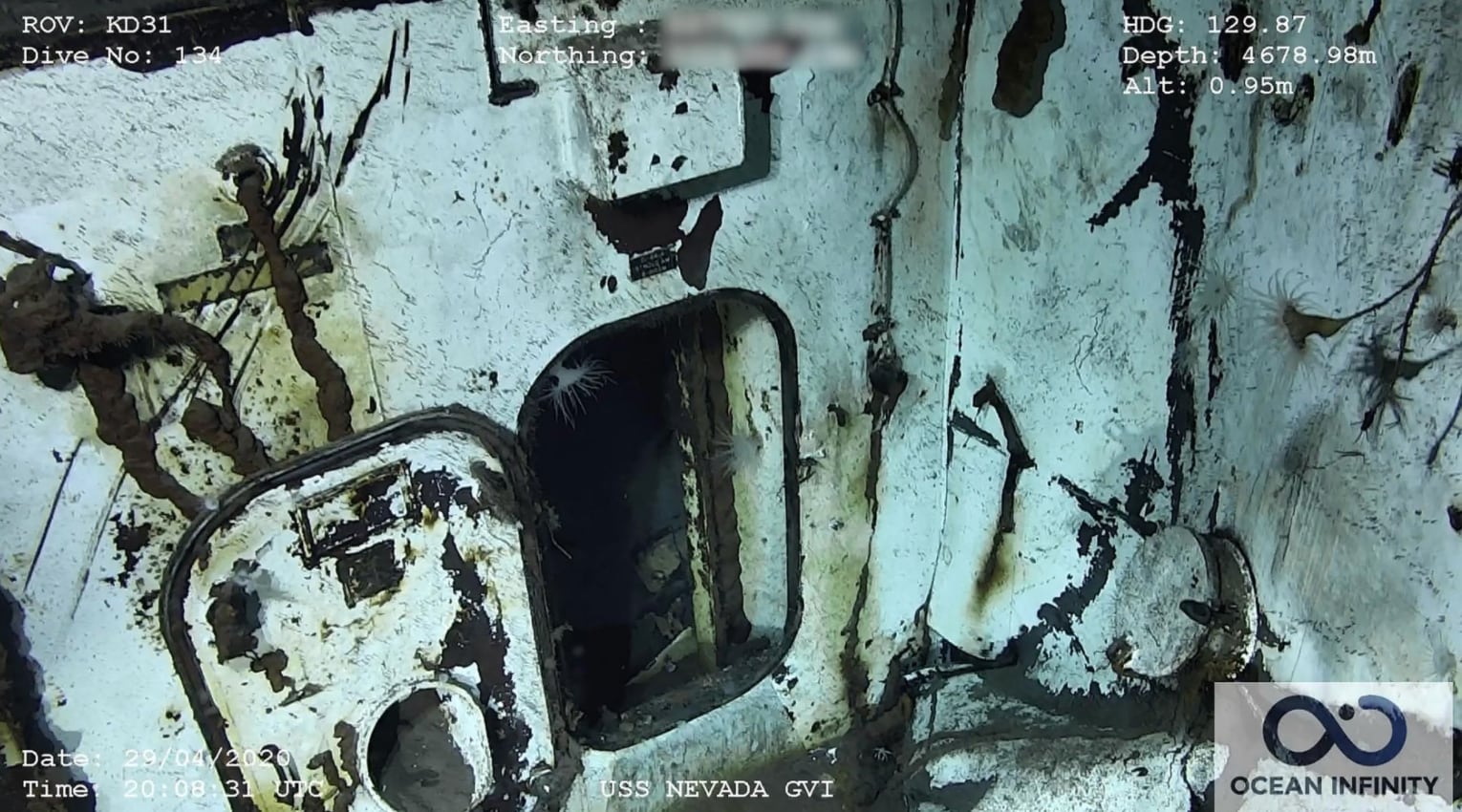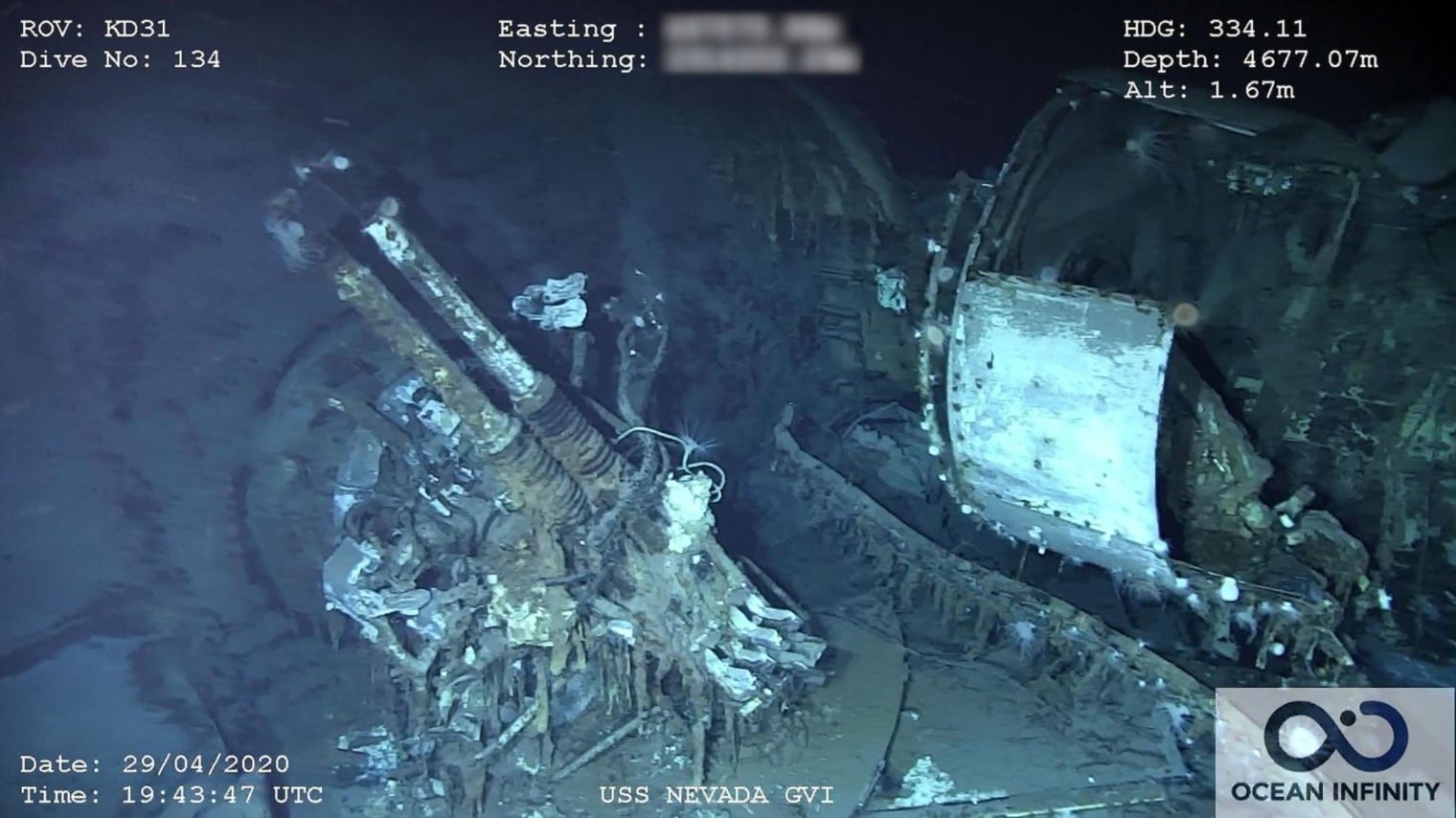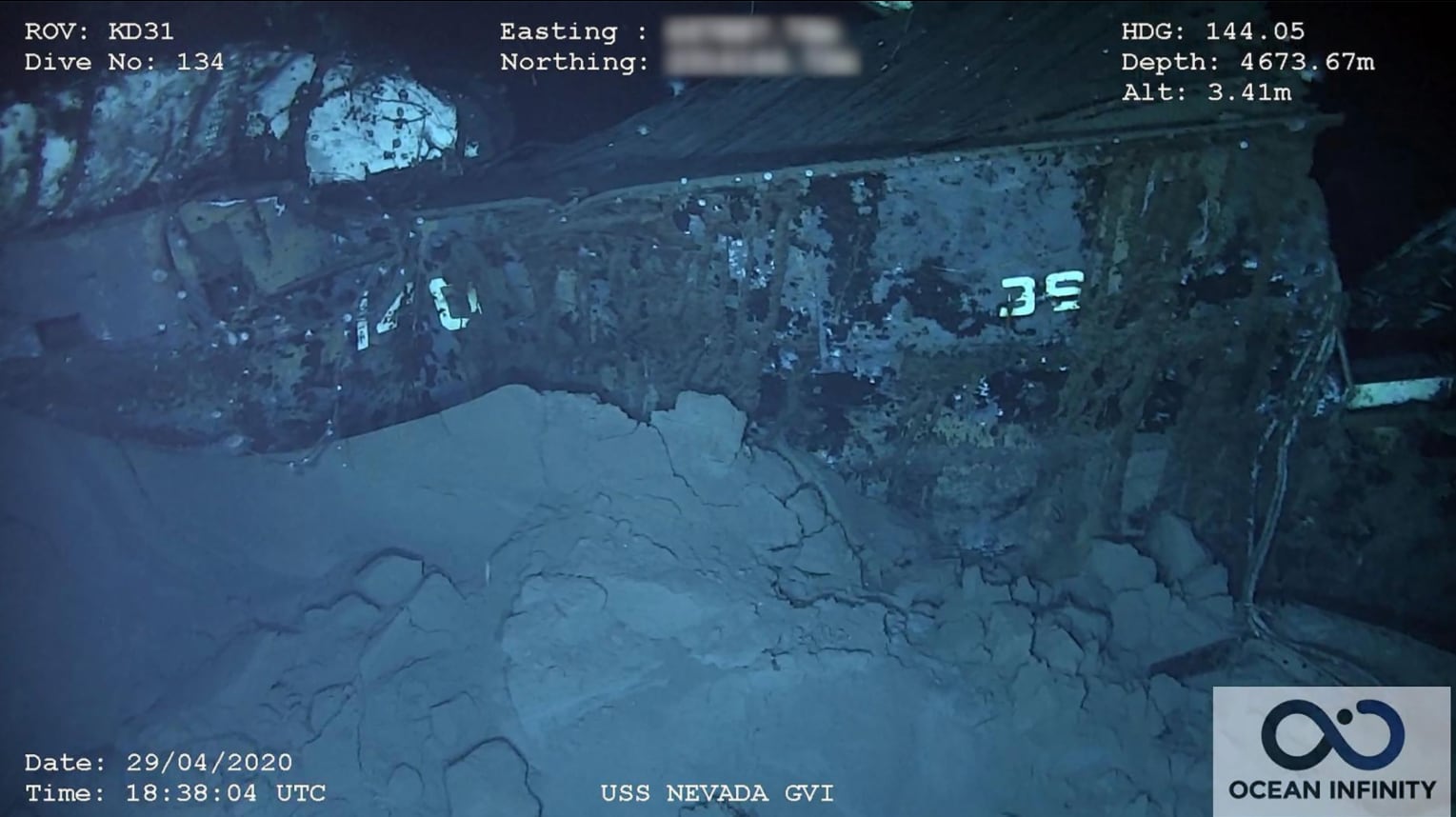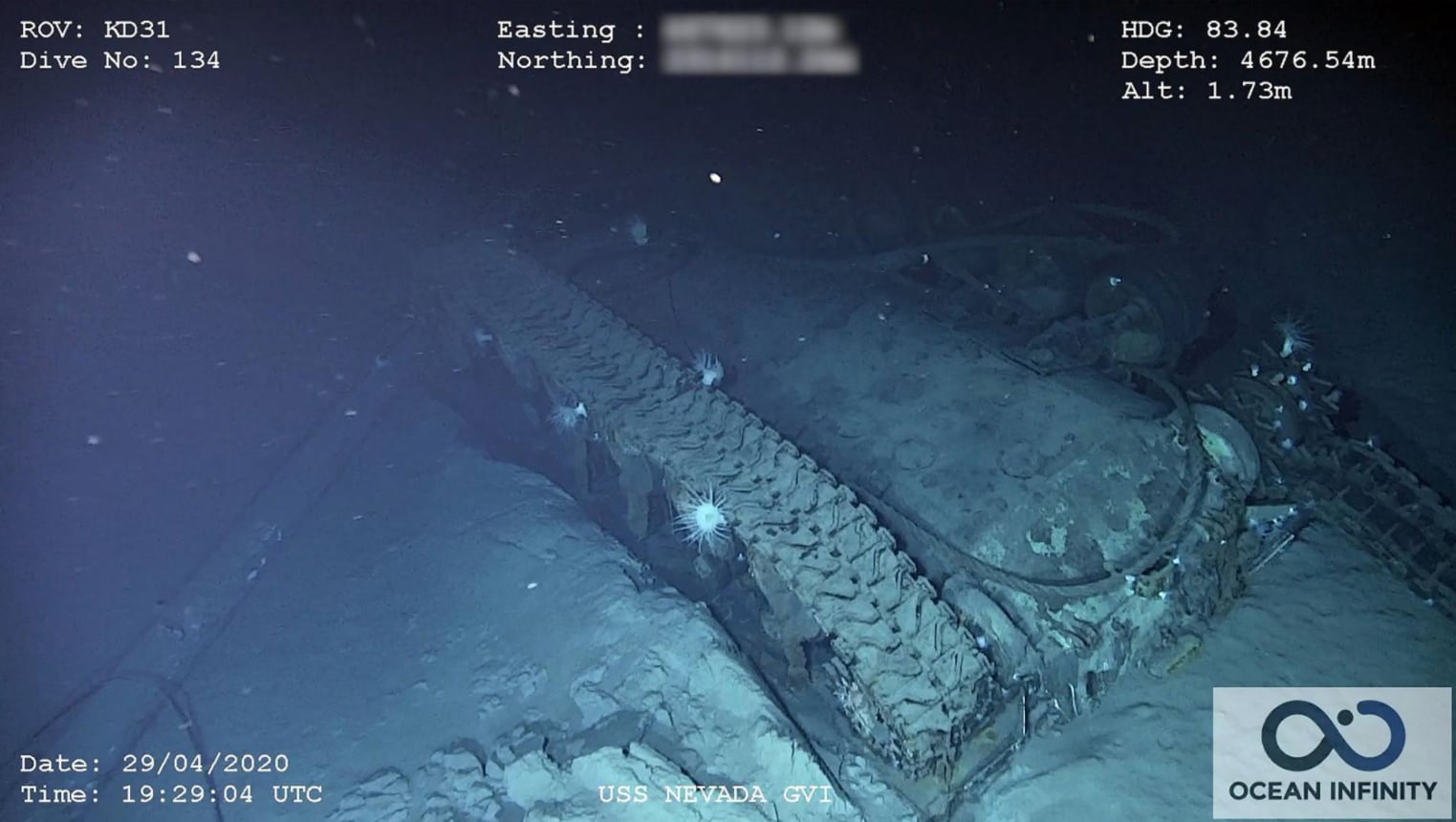On Monday a collaborative team of researchers from SEARCH, Inc. and Ocean Infinity announced the discovery of the resilient battleship USS Nevada (BB-36) nearly 70 nautical miles southwest of Pearl Harbor at a depth of over 15,400 feet — or, nearly three miles.
Commissioned in 1916, the USS Nevada eventually went on to serve at Pearl Harbor, where, on Dec. 7, 1941, it would survive as many as 10 bomb blasts and one torpedo impact during the attack. Quick reactions that day by the ship’s crew led to the intentional grounding of the vessel, which kept it from sinking.
The battleship was eventually repaired and went on to participate in the 1944 invasion of Normandy, sending thunderous volleys from its 5″ and 14″ guns toward German defenses as Americans waded ashore.
But the USS Nevada would not be confined to the Atlantic theatre during World War II — in 1945 the ship joined the invasions of both Iwo Jima and Okinawa.
The 575-foot-long battleship, which featured armored plates 13.5 inches thick, would earn a total of seven battle stars for its performance in WWII.
“Nevada is an iconic ship that speaks to American resilience and stubbornness,” said Dr. James Delgado, SEARCH, Inc.'s senior vice president and lead maritime archaeologist on the Nevada mission.
“It survived torpedoes, bombs, shells and two atomic blasts. The physical reality of the ship, resting in the darkness of the great museum of the sea, reminds us not only of past events, but of those who took up the challenge of defending the United States in two global wars.”
Following the war, the USS Nevada, nearing the end of its life cycle, was employed as a target in the first series of atomic bomb tests at Bikini Atoll.
The ship managed to stay afloat after the impact of two bombs, one of which was a 23-kiloton variant that missed badly. The other, an underwater detonation, created a splash that engulfed the ship and rendered it radioactive.
It was subsequently towed to Pearl Harbor, where she sat until 1948, when once again, she was summoned for target practice.
Multiple ships, including the battleship USS Iowa (BB-61), fired on the Nevada, but still she refused to sink.
Almost five days transpired before the ship finally slipped below the surface, the final blow coming in the form of an aerial torpedo dropped by an American pilot.
Because the Navy did not record the exact coordinates of its sinking, finding the stubborn battleship proved difficult. Autonomous underwater drone operators aboard the Ocean Infinity vessel were forced to rely on eyewitness accounts of the sinking to narrow the location of its resting place down to an area of 100 square miles.
Upon locating the battleship, high definition images were transmitted to the research team that once more brought to life one of the most unsinkable ships in the Navy’s history.
“We are greatly appreciative to Ocean Infinity and Search Inc. in relocating and providing information on an extremely historic vestige of our nation’s past,” said retired Rear Adm. Admiral Samuel Cox, who now serves as the director of Naval History and Heritage Command.
“Nevada is an unambiguous reminder of our Navy’s heritage of resilience. ... Her fighting spirit proved the U.S. Navy remains tough in difficult times. When the circumstances appear to be at their worst, our Navy remains at their best.”
View more images of the discovery below.




J.D. Simkins is the executive editor of Military Times and Defense News, and a Marine Corps veteran of the Iraq War.



